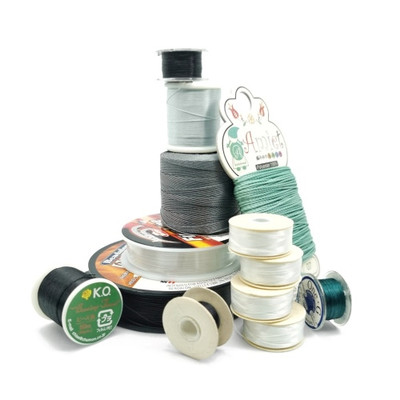All About Beading Thread: A Deep Dive
Hi bead lovers, it’s Aga from EurekaCrystalBeads.com and in this post, I'll discuss beading thread!
Our YouTube video on this subject turned out quite useful for beaders, and we got some requests to write it all down, so if you prefer to read, here's a deep dive into different types of threads most popular for beading and jewelry making, their pros and cons and the differences between them both in terms of their characteristics as well as practical use.
Let's go!
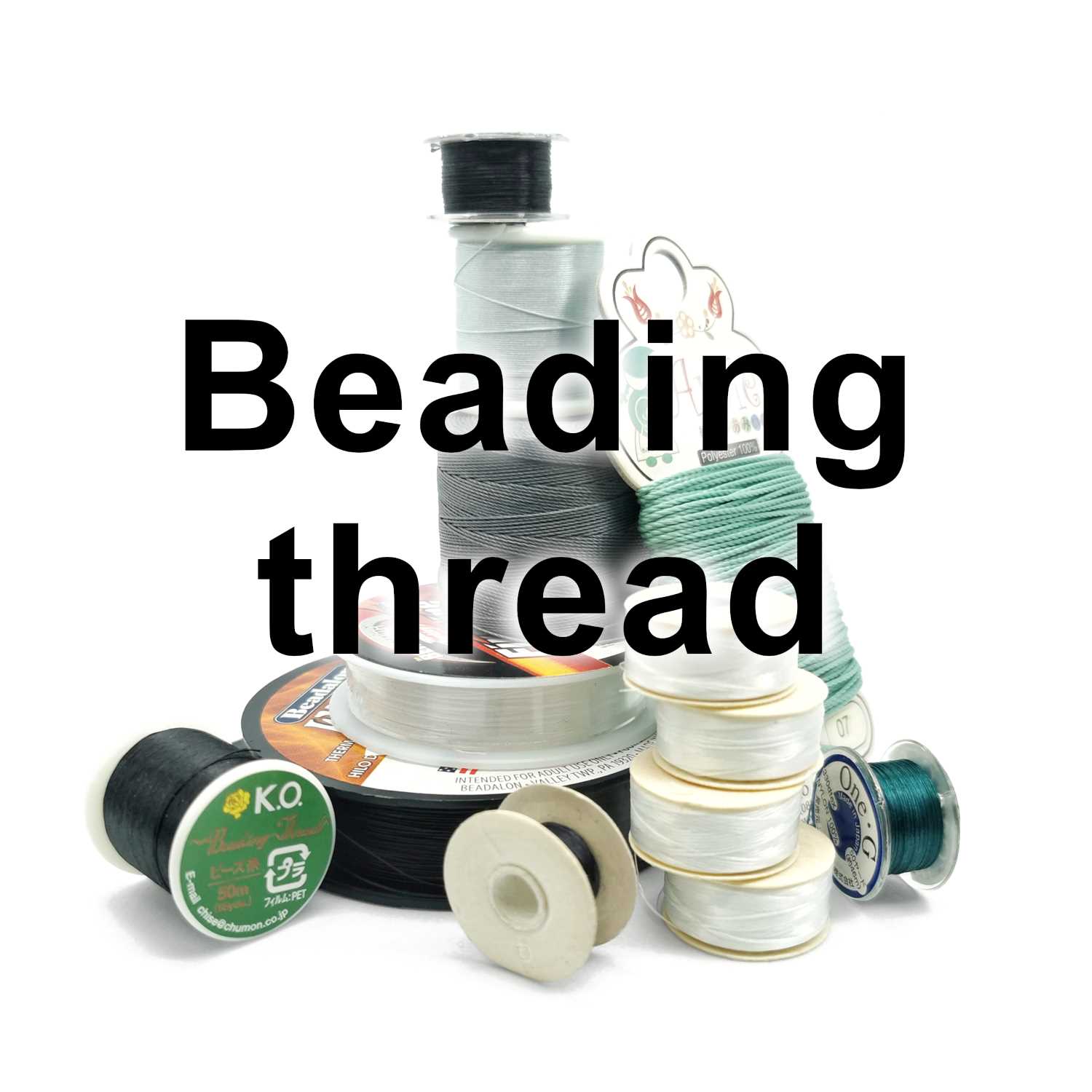
Available beading threads
When it comes to bead weaving, bead embroidery and loom weaving, the available options are:
And for more heavy-duty beading (such as bead stringing, for warp in loom weaving or bead crochet), you could also use:
Let's now quickly describe each of these options.
Nymo
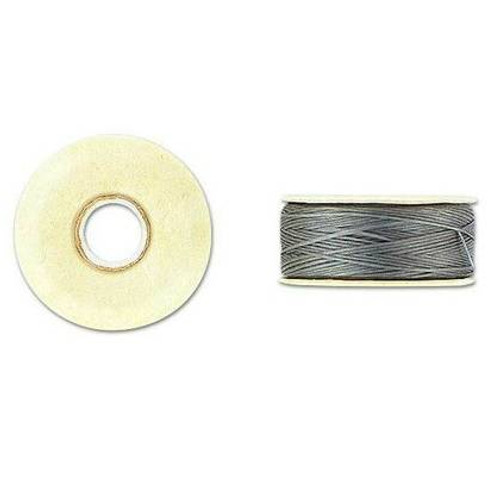

First up, we have Nymo. It’s a nylon thread sold on 64 yard paper spools, it’s flattened, slightly pre-waxed, it comes in several different sizes, from double zero which is the finest, through zero and B to D, which is the thickest. Originally developed for upholstery, it’s quite strong, but at the same time produces a flexible outcome, and you can get it in many different colors, including cute tube multipacks.
One drawback is that this one will fray the quickest of the beading threads when it’s overworked, so it’s good to condition it first, for instance with wax. Also, the colors do fade a bit when exposed to sunlight, if you ever want to create something that has thread as a visible feature.
TOHO One-G
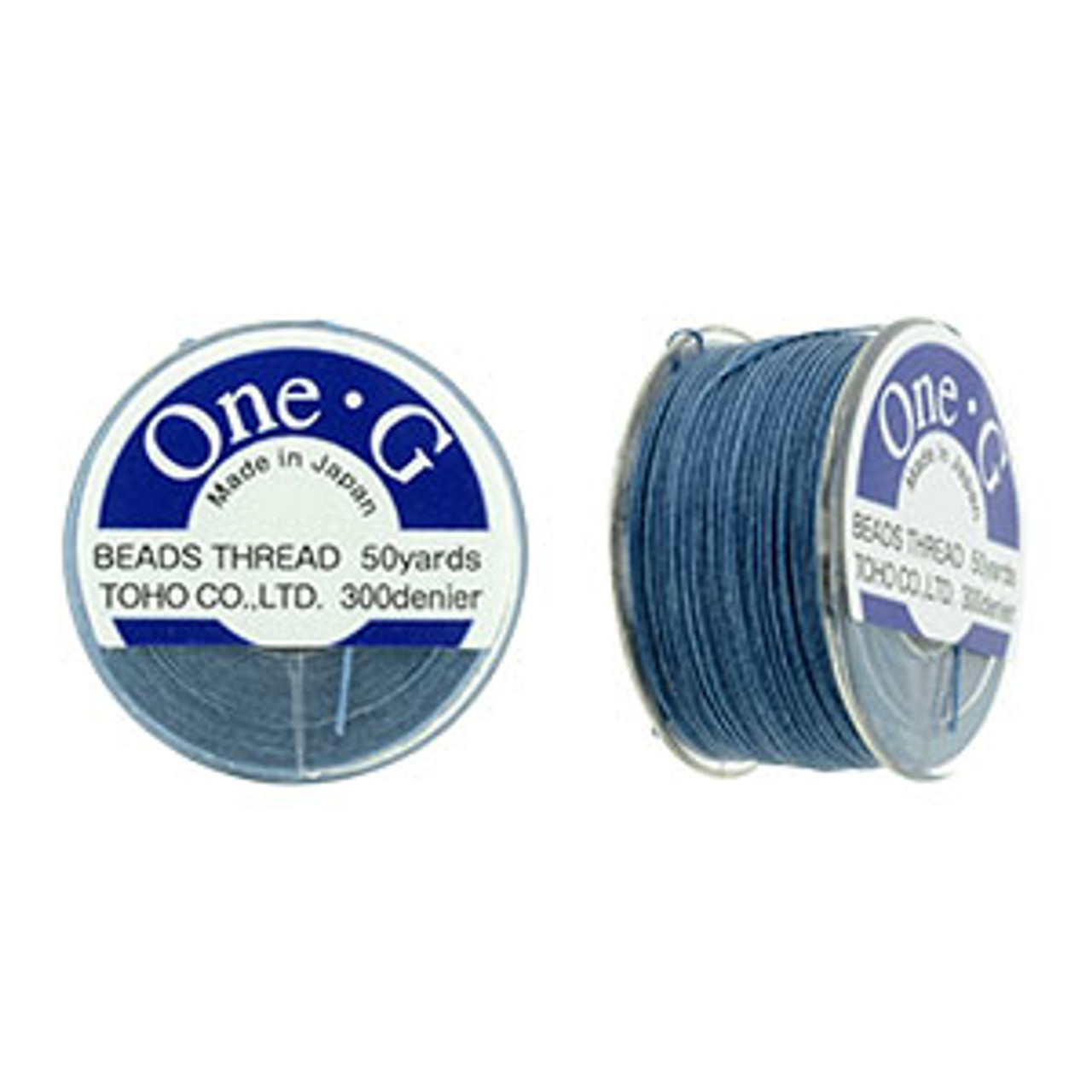


Next, there’s TOHO One-G: it’s a Japanese beading thread manufactured by TOHO, the same brand that makes one of the most popular glass seed beads. It’s also made of nylon, and it’s sold on 50, 125 or 250 yard plastic spools, it’s slightly flattened and comes in one size which is similar to Nymo size B (the mid-thick one).
It is coated with an anti-tangle and anti-fraying agent, so it will take more than Nymo. It’s very strong and a tiny bit stiffer than Nymo, but still fairly flexible, so it will do great for virtually all beadwork, from embroidery and bead weaving, to loomwork and fringes. One-G also offers a wide range of colors and multipacks. Personally, I can tell it was made for beads, and I did feel the difference when I discovered this thread for the first time.
KO


Another option is the KO thread which comes on these tall plastic spools that have 55 yards of nylon thread on them, and also comes in one size which corresponds to Nymo size B, which is the same as the thickness of One-G thread, but it’s more sleek and shiny. It has no stretch and is fairly resistant to fraying, and it will do great in most beadwork. Like One-G, it’s made for beading, and working with it is really great. I would describe the available colors as moderate and a bit muted, but quite pretty.
Fireline and Wildfire


Now let’s get on to the more fishing line-like threads, Fireline and Wildfire. Both of them are sold on round plastic spools at either 50 or 125 yards.
Fireline was first, and it’s literally a fishing line turned beading thread! It is thermo-bonded and has 3 sizes that are described in pounds, because they denote how big a fish the line could take, so there’s the finest, 4 pounds, then 6 and 8 pounds. All of them are finer than the previous beading threads, the 8-pound one being the closest. Fireline is made of polyethylene, so it’s stiffer than the other beading threads, but it is also stronger. It only comes in 3 basic colors, white, black and gray, and it’s a great choice for bead weaving to make stiffer pieces, but it’s not too good for fringes.
Wildfire is basically a cousin of Fireline with two sizes: .6 and .8 inches, the latter being the same thickness as mid-thickness Nymo, as One-G and KO. It also comes in several more colors to choose from than Fireline.
These threads are widely loved by beaders for bead weaving projects, and since they are made using different methods and from a different material, they are way less likely to fray. Due to their stiffness, however, they are rarely the preferred choice for bead embroidery.
S-Lon Super Lon Micro Cord


A cord that deserves an honorable mention among beading threads is S-Lon Super Lon cord, and here I mean specifically the micro-cord, which I love for stringing beads, it will also be great for bead crochet and tiny micro macrame.
It’s a nylon multi-filament cord that is very strong and doesn’t stretch much. It comes on spools and in different thicknesses, most popular for beadwork are the .5 mm sold on bobbins of 77 yards (the regular S-Lon) and the .25 mm micro cord sold on bobbins of 287 yards.
Although they’re not useful in bead weaving or bead embroidery, they’re great for stringing beads if you want a flexible, flowy necklace or bracelet, they're great for warp in loom weaving, and for bead crochet, so it is worth knowing them.
TOHO Amiet beading cord

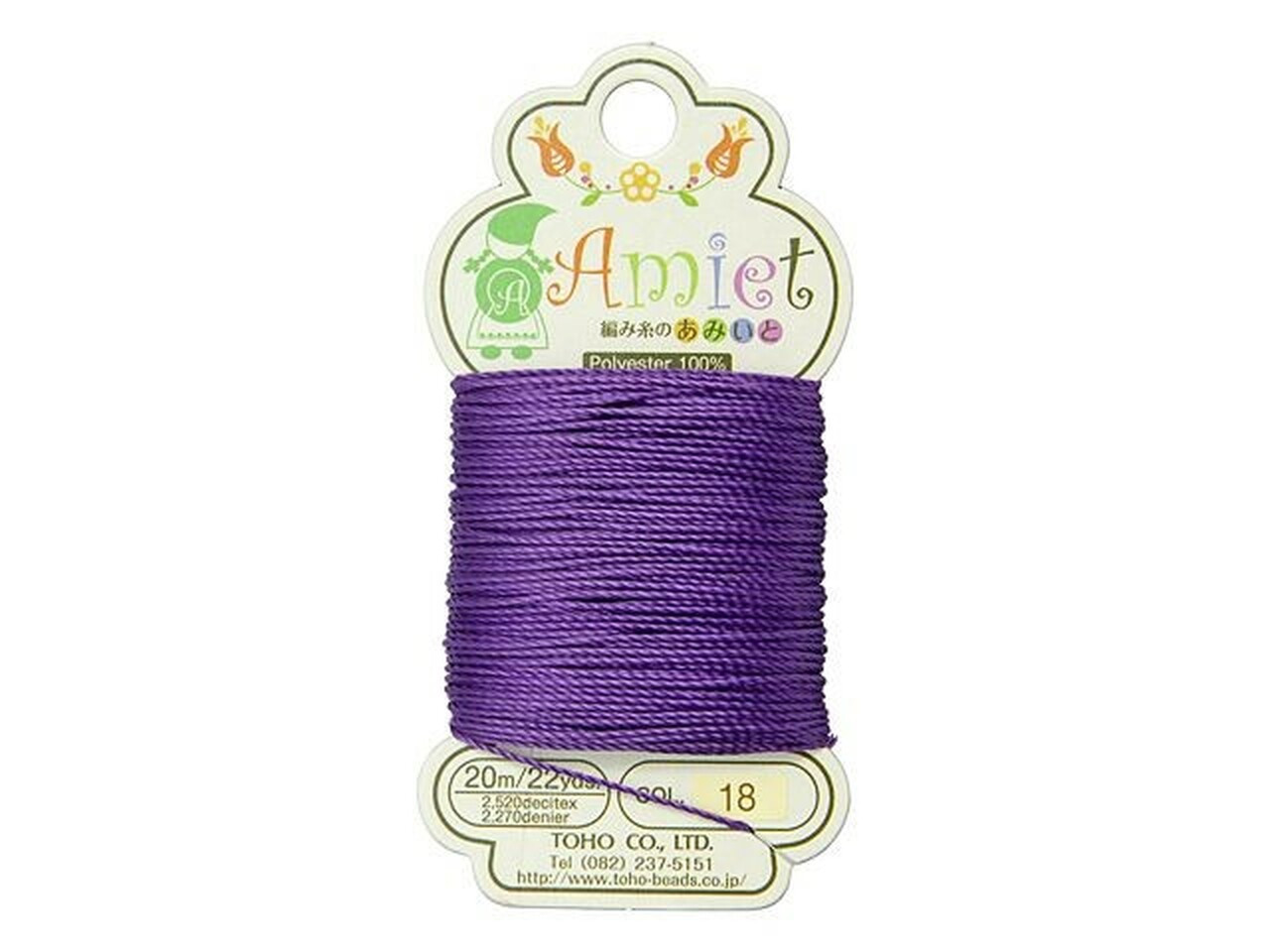
Sold on cute little paper bobbins, this cord is made of polyester, it’s half a milimeter thick, so slightly thicker than S-Lon Micro Cord, but will work for most of the same purposes – to string a necklace (you have to make sure your beads have large holes, thoigh!), to do bead crochet and for micro macrame.
It is also a little bit stiffer than S-lon Micro, so you may be able to easily string beads on it without a needle. A big plus here is that this cord comes in various different vibrant colors to choose from.
Let’s rank them!
Ok now, why don’t we rank these threads! Here, I’ll focus on the bead weaving and bead embroidery threads, so I’m not considering S-Lon or TOHO Amiet cord.
The cheapest thread*
The first thing to consider when selecting thread is its price, especially if you're a beginner. Obviously, you can sign up for our newsletter and wait until they are on sale, but outside of special deals and sales... which beading thread is the most affordable?
Per spool, the cheapest thread is TOHO One-G, followed closely by Nymo; a little bit farther is KO, and Fireline is the most expensive one.
What about per yard? I’ve done the math and you can get the most thread for a dollar if you buy Nymo, then with almost the same result comes One-G, then KO for four cents more per yard than that, and full 14 cents behind them comes Fireline.
I did consider getting a larger spool, which are sold for One-G, black and white Nymo, and the fishing line threads, but remember that for the nylon ones you can get multipacks, and in most cases it’s a good deal!
*Based on average regular prices in 2022 and so far in 2023.
The strongest thread
When it comes to strength, on their own, all beading threads are doing great. Some of them, however, can break upon contact with a sharp edges, for instance the edges of some bugle beads.
Taking everything into consideration, the strongest thread is hands down Fireline. Second we could put all of the nylon threads together, because they can all rip after multiple bead passes if you pull to hard and there's a sharp edge, but if I had to, I’d rank Nymo a tiny bit behind.
The smoothest thread
When it comes to smoothness, the winners are Fireline and Wildfire simply because of their structure. When it comes to the nylon beading threads, the order would have to be: KO, then One-G, and lastly Nymo. All of them are quite smooth, at least fresh off the spool.
The most colors
Which thread has the most colors to choose from? This category is an undisputable win for One-G, with the most colors available on single spools and in multipacks, both on small and large spools. We carry 22 colors of this thread! Next comes Nymo, with a great choice of colors in sets and a smaller number of colors of single spools (though Nymo does have periods of unavailability), which is the opposite for KO, of which we offer more colors on single spools and only a couple more in multipacks. All of these leave the last contestant much behind, with Fireline only offering three colors!
The most sizes
With respect to the available sizes, Nymo is first, with as many as four sizes from double zero which is the finest, through zero and B to D, then we have Fireline, with 3 sizes, Wildfire, coming in 2 sizes, and you can get the rest of the threads in one universal size.
Different threads in practice
Fringe
Let’s start with fringe, which is a great indicator of how flowy a thread can be.

As you can see, fringe made using Nymo, Toho One-G and KO threads are quite flowy and flexible, while fringe made using Fireline is stiff. If you make fringe with nylon threads, it will be very dangly, and to get some dangle from Fireline or Wildfire, you would have to make your fringe very long and/or use heavy beads at the ends.
Bead weaving
Now let’s take a look at some bead weaving. I made some sample herringbone stitch chains with the threads.

Making bead woven pieces, depending on the design, you may need your thread to have different properties. For necklaces (or parts of necklaces that go around your neck) and bracelets, you might want your beaded piece to have a soft, pliable "consistency," while for bezels and things like compact pendants or rings you'll probably need your beads to stay together and keep shape as tightly and as stiff as possible.
As you might have guessed, nylon threads such as Nymo, One-G and KO will be great for the former, producing a flexible, more loose effect, while the fishing line threads — Fireline and Wildfire — are typically preferred for the latter purpose, resulting in solid, stiff beadwork.
Bead embroidery
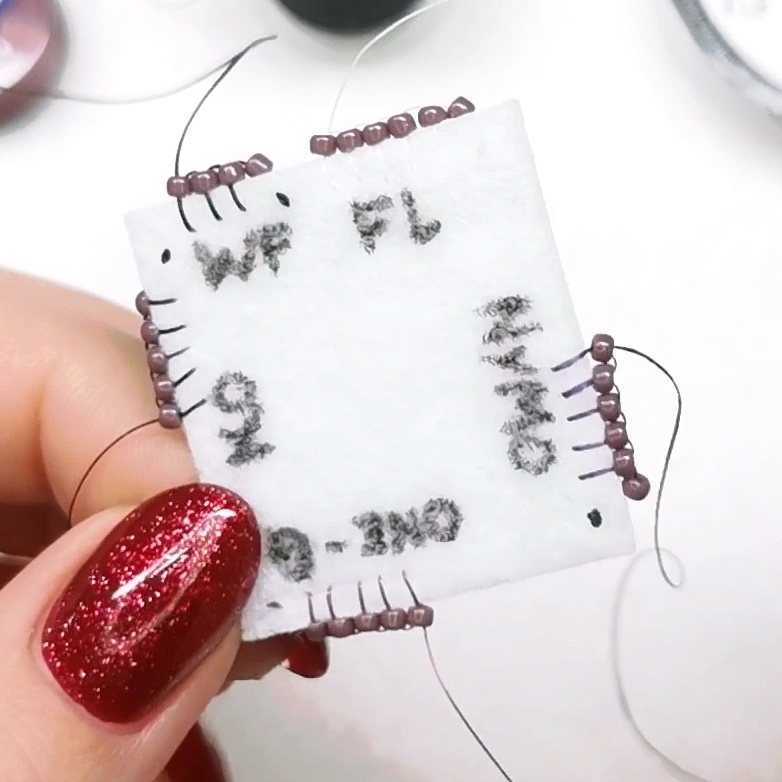
In my experience, when it comes to bead embroidery, it’s really the comfort of the process that matters. Although you can technically embroider using Fireline or Wildfire, they are much more difficult to work with in this technique than the nylon threads.
Nymo, One-G and KO all pass through the beads and the beading foundation very smoothly, Nymo being the most likely to fray if you cut a piece that is very long and pass through a lot of beads. Working with them is quick and convenient. Fireline and Wildfire, even the variants that are thinner than the nylon threads, pass through the foundation just fine, but getting the needle with one of these threads on through may even require the aid of pliers, and this moment alone makes the process more tedious and slower.
With all that said, naturally there are no fixed rules on what thread to use. Some beaders even prefer Fireline for bead embroidery! All things considered, it's best to try several options and see what's best for you.
I hope this little guide was helpful and you're more confident about which thread to try & feel inspired to create! Now, go get some thread
and happy beading!
Watch our "All About Beading Threads" video here.







